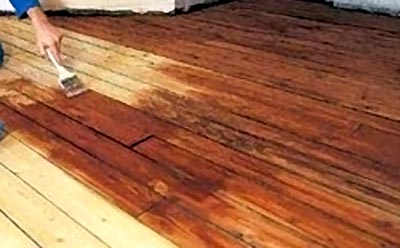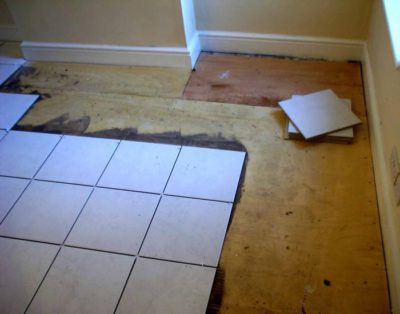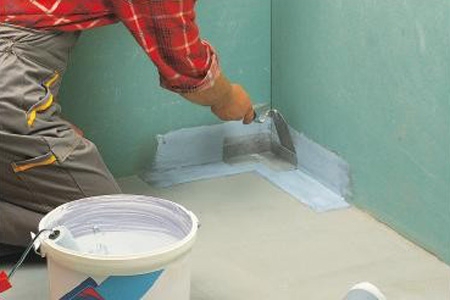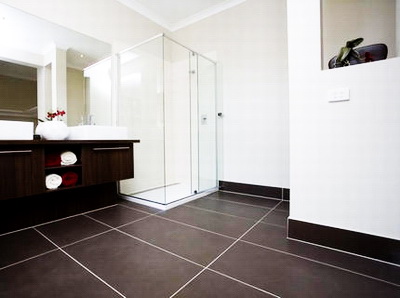Waterproofing a wooden floor: what is the best insulation and how to carry out work?
The main disadvantage of wooden floors is their exposure to moisture. Its detrimental effect leads to decay of the boards and the destruction of the floor covering. Therefore, waterproofing a wooden floor is a very important point in the equipment of flooring. We suggest you familiarize yourself with the main features of working with its various types.
What types of waterproofing are there?
There are several types of waterproofing. Which one to choose depends on the construction of the base, the purpose of the room and the type of flooring. By the type of material used and the method of conducting waterproofing is:
- painting;
- cast;
- filling;
- plastering;
- okleechnaya.
And now about each method of waterproofing in more detail.
Painting waterproofing
Waterproofing by painting is the most affordable way to protect wooden floors. It consists in the repeated application of bitumen or polymer varnishes to the surface.
The disadvantage of this method of waterproofing is the fragility of the protective coating. Over time, it loses its elasticity (especially from temperature differences) and becomes brittle. Subsequently, cracks and chips form on the surface. Therefore, after five to six years, the waterproofing layer has to be restored.

The wooden floor must be sanded before waterproofing. Degrease and dry. Then cover the floors with a primer made of bituminous mastic. Allow the substrate to dry and paint with a brush or roller. If necessary, repeat the color several times.
Cast waterproofing
Cast waterproofing is considered the most reliable of the existing ones. But it costs a lot more. Hot bitumen, pitch, asphalt concrete are consumables for cast waterproofing. The degree of viscosity of the material depends on the temperature of the composition used. Liquid bitumen should have a temperature of not more than 10 ° C, low viscosity - 50-80 ° C, viscous - 120 ° C.

Before starting work, it is necessary to prepare the base: clean, repair cracks and dry. Primer with hot bitumen. Build a formwork around the perimeter of the room. Warming up the waterproofing material to the required temperature, fill it with the entire surface. Smooth with a metal scraper and leave until it hardens. If necessary, you can make several of these layers.
Backfill waterproofing
For backfill waterproofing use bulk materials (concrete) filling the prepared space. When interacting with water, concrete forms a gel that practically does not allow water to pass through. In addition to waterproofing properties, the resulting waterproofing layer also has thermal insulation capabilities. Moreover: the thicker the layer, the higher they are.

Before starting to fall asleep waterproofing material, it is necessary to make formwork around the perimeter of the room. To clean and dry a surface. Then fill the waterproofing material, carefully level and seal.
Stucco waterproofing
Plaster compositions for waterproofing consist of mineral binders and polymer compounds. Cement is most often used as a filler. The composition is applied in several layers, creating a waterproof seal.
The basis for such waterproofing should be strong and free from paint and dirt. All cracks and irregularities must be repaired with a special putty. The dry mix for waterproofing is diluted with water strictly according to the instructions and thoroughly mixed. It is advisable to use a construction mixer.
Work is carried out at temperatures from +5 º to + 30º. The solution is applied in several layers (3-4) with an interval of 5-10 minutes. During the hardening process, the surface must be protected from the work load, subzero temperatures and drying out.
Waterproofing waterproofing
Okleechnaya waterproofing is carried out by gluing to the base of rolled bitumen, polymer or polymer-bitumen materials. All materials must be made of rot-resistant components.

Before performing waterproofing, the floor must be cleaned and dried. After preparations, mastic is applied to the surface with a layer of 1.5 mm. Waterproof rolls roll out from above. Adhesion of the material is achieved with solvent based adhesives. As well as the method of heating and welding peeled seams. The number of waterproofing layers depends on the exposure of the floors to moisture.
Some tricks
Floors in a wooden house need even greater protection against moisture not only from above, but also from below. If there is no basement in the building, waterproofing from below is carried out even in the process of building the foundation. But the waterproofing of the floor in a wooden house with a basement is a bit more complicated. To protect the floors from the damp present in the basement, a whole range of measures is needed.
A good ventilation system should be installed underground. All wooden structures must be treated with antiseptics. On the basement side, the floors are isolated with roofing material or isoplast. Waterproofing works in wooden houses are usually carried out in conjunction with thermal insulation.
Waterproofing the wooden floor in the bathroom
Undoubtedly, waterproofing the wooden floor in the bathroom is a very important event. This room is more susceptible to moisture than others. It is necessary to think about this when arranging wooden floors. For the floor in the bathroom, it is better to choose the material least exposed to water.

You can use aspen, alder, larch, or other water-resistant wood species for it. When performing insulation work in the bathroom, the layer of waterproofing material should be thicker than in other rooms. Tiles can be laid on top of the wooden floor. It reliably protects the base from moisture.
The waterproofing of the wooden floor is an important stage in the arrangement of housing. The microclimate in the room and the well-being of its inhabitants depend on this moment. Excess moisture contributes to the formation of fungus. And it not only harms wooden structures, but also harms people. Properly carried out waterproofing will maintain a favorable climate in your home.



